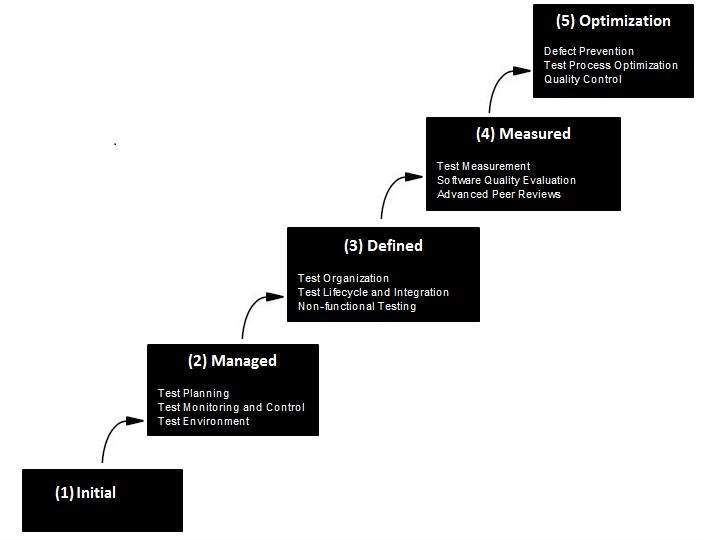What is Capability Maturity Model?
This article will provide you a good understanding of a software development model called CMM.
The Capability Maturity Model (CMM) is a framework developed by the Software Engineering Institute (SEI) at Carnegie Mellon University in 1987 to improve the software development process.
It is a methodology used to evaluate and improve the maturity level of software development processes in organizations. CMM is a five-level framework that aims to establish a standard approach to software development that can be used across industries.
There are 5 levels present in this model which are described below:
Level 1- Initial: The first level of CMM is known as the initial level. At this level, there is no formal software development process, and projects are completed in an ad hoc manner. The software development process is not repeatable, and there is no tracking of defects or issues. The focus is on getting the job done rather than on doing it right. This level is typically associated with high risk, high cost, and poor quality.
Level 2- Repeatable: The second level of CMM is known as the repeatable level. At this level, the software development process is documented, and procedures are established to repeat successful projects. There is an emphasis on project management, and quality assurance processes are put in place. The focus is on ensuring that the process is repeatable and predictable. This level is associated with lower risk, lower cost, and improved quality.
Level 3– Defined: The third level of CMM is known as the defined level. At this level, the software development process is fully documented, and procedures are established to manage the development process. There is a focus on developing and maintaining a standard process for software development. The focus is on optimizing the process and continuously improving it. This level is associated with a lower risk, lower cost, and higher quality.
Level 4- Managed: The fourth level of CMM is known as the managed level. At this level, the software development process is measured and controlled. There is a focus on using data and metrics to manage the development process. The focus is on making data-driven decisions to continuously improve the process. This level is associated with even lower risk, lower cost, and higher quality.
Level 5- Optimizing: The fifth and final level of CMM is known as the optimizing level. At this level, the software development process is continuously improved and optimized. The focus is on understanding the process and identifying opportunities for improvement. The process is continually refined and adapted to meet the changing needs of the organization. This level is associated with the lowest risk, lowest cost, and highest quality.

Key Process Areas in CMM model
The Capability Maturity Model (CMM) identifies key process areas (KPAs) for each of the five levels of maturity. The KPAs are specific areas of focus that are critical to achieving the level of maturity associated with each level. The key process areas for each level of maturity are as follows:
Level 1 - Initial: At the initial level, there are no specific KPAs identified. The focus is on establishing a basic process for software development.
Level 2 - Repeatable: The key process areas at this level are:
- Requirements Management: This KPA involves the establishment and maintenance of a process for eliciting, analyzing, documenting, validating, and managing requirements.
- Software Project Planning: This KPA involves the development and maintenance of a plan for software development that includes cost, schedule, and quality objectives.
- Software Project Tracking and Oversight: This KPA involves the establishment and maintenance of a process for tracking and monitoring software development progress against the plan.
- Software Subcontract Management: This KPA involves the establishment and maintenance of a process for managing software development by subcontractors.
- Software Quality Assurance: This KPA involves the establishment and maintenance of a process for ensuring that software products and processes conform to established requirements, standards, and procedures.
Level 3 - Defined: The key process areas at this level are:
- Organization Process Focus: This KPA involves the establishment and maintenance of a process improvement program that aligns with organizational goals.
- Organization Process Definition: This KPA involves the development and maintenance of a standard process for software development.
- Training Program: This KPA involves the establishment and maintenance of a program for training personnel in the standard process.
- Integrated Software Management: This KPA involves the integration of software development activities with other engineering and management activities.
- Software Product Engineering: This KPA involves the establishment and maintenance of a process for software development that includes requirements analysis, design, coding, testing, and maintenance.
- Inter-group Coordination: This KPA involves the establishment and maintenance of a process for coordinating software development activities across different groups within the organization.
- Peer Reviews: This KPA involves the establishment and maintenance of a process for conducting reviews of software products and processes.
Level 4 - Managed: The key process areas at this level are:
- Quantitative Process Management: This KPA involves the establishment and maintenance of a process for managing software development based on quantitative data.
- Software Quality Management: This KPA involves the establishment and maintenance of a process for measuring, analyzing, and improving software quality.
Level 5 - Optimizing: The key process areas at this level are:
- Process Change Management: This KPA involves the establishment and maintenance of a process for managing changes to the standard software development process.
- Technology Change Management: This KPA involves the establishment and maintenance of a process for managing changes to the technology used in software development.
- Defect Prevention: This KPA involves the establishment and maintenance of a process for preventing defects from occurring in software products and processes.
- Continuous Process Improvement: This KPA involves the establishment and maintenance of a process for continuously improving the software development process based on quantitative data and customer feedback.
This is all about CMM. Hope you understood this topic.